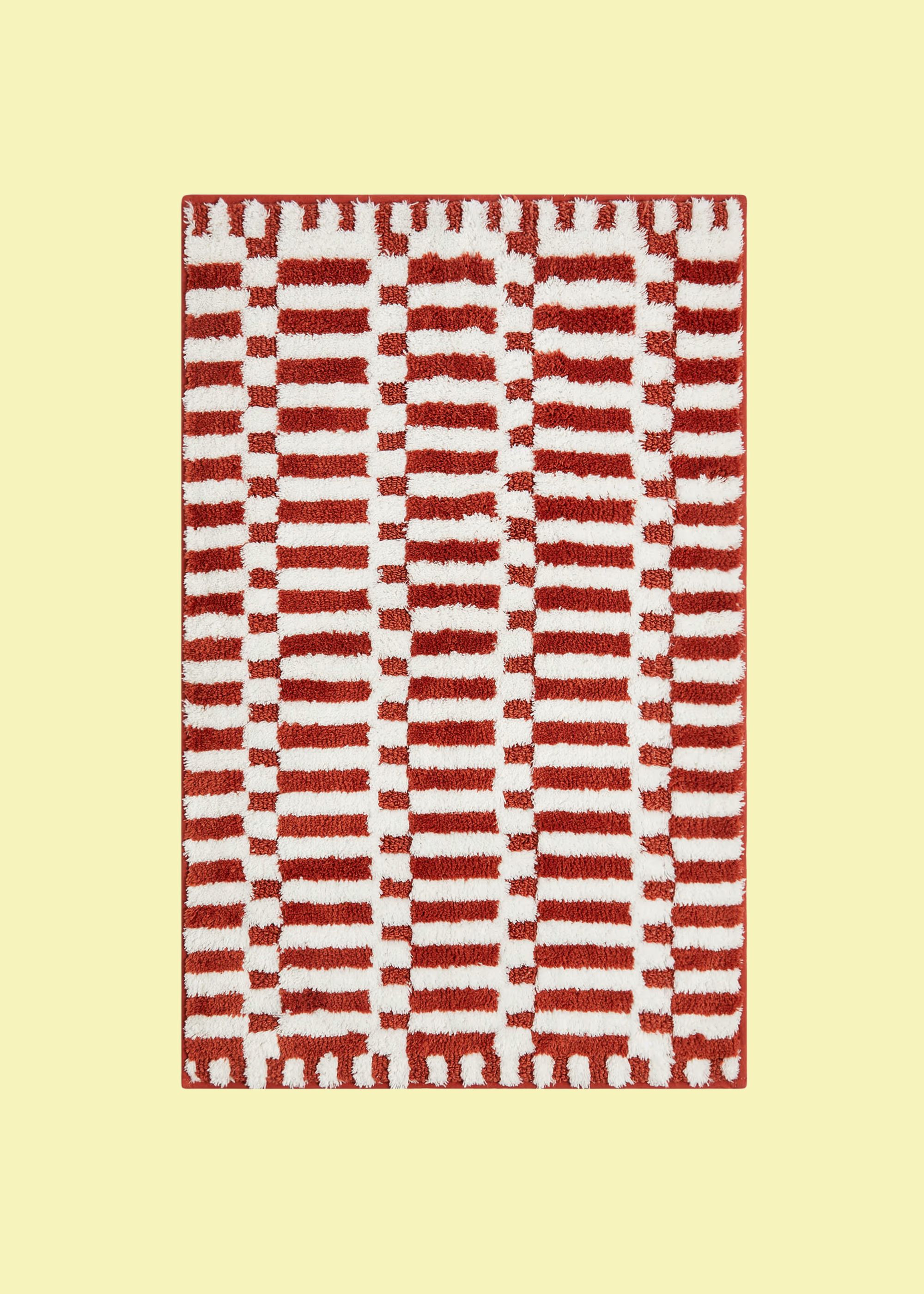4 Countertop Materials to Avoid in a Bathroom and What to Use Instead in Your Next Renovation
According to the experts, there are a few materials that could make your bathroom look dated in no time if they're not taken care of properly, and here's why you should avoid them
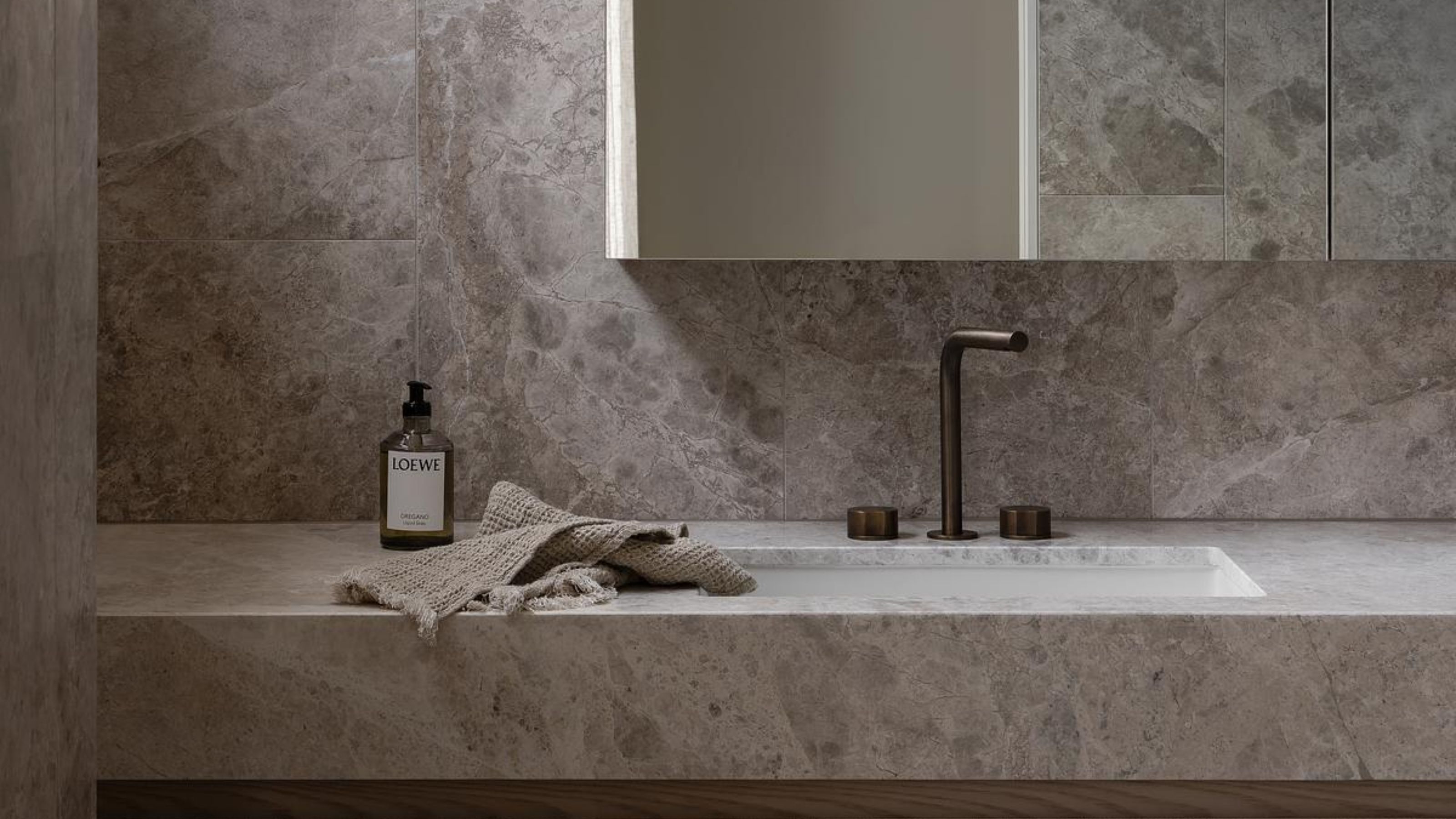

Choosing the right bathroom countertop material is key to a seamless and long-lasting design. When renovating this area of the home, it's essential to consider the materials that can withstand the moisture in a bathroom and opt for those that will last for years to come.
If you're looking to bring your modern bathroom ideas to life, opting for strong and durable countertop materials is a must, and there are a few materials you should steer clear of, according to the experts. Lauren Saab, founder of Saab Studios, tells me, "Bathrooms need materials that work as hard as they look. A solid surface countertop with an integrated sink makes the design clean and water-tight. The seamless construction helps prevent buildup, keeps its finish, yet is sculptural and elegant. It brings a sense of order to the space, proving that function can be every bit as beautiful as form."
So, without further ado, here are four bathroom countertop materials you should avoid and what you should choose instead when renovating your bathroom.
1. Marble
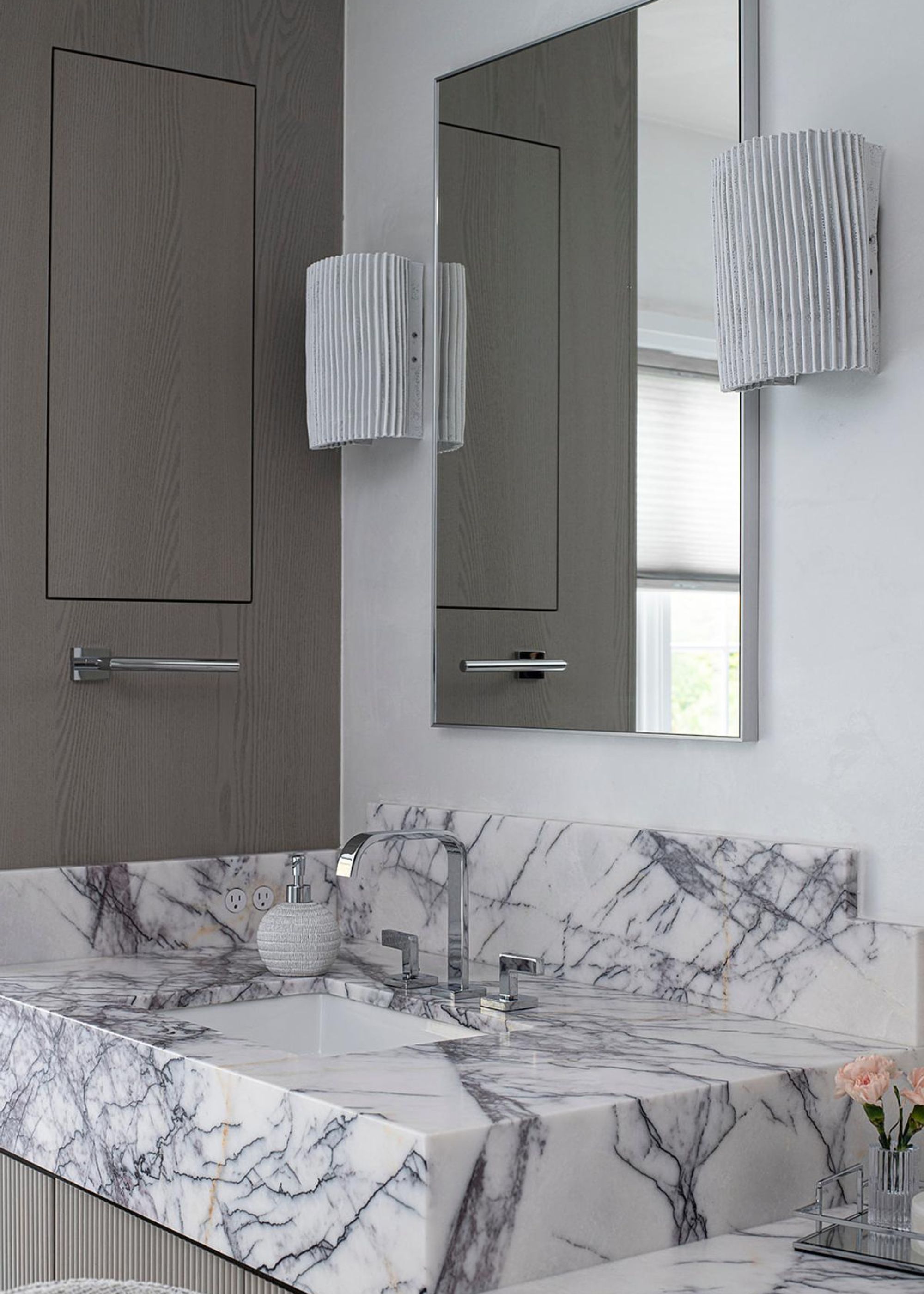
Marble certainly adds a spa-bathroom and luxury feel to a space, but it's not exactly the easiest material to maintain. Marble is easily susceptible to stains and scratch marks, which is why keeping it outside of the bathroom is probably best in the long run.
"Marble is gorgeous but unrealistic for daily use. It stains easily from everyday products and spills," explains Lauren Saab, founder of Saab Studios. Instead, the designer says it's best to "choose quartzite for the beautiful natural veining and depth similar to marble without the problems and maintenance."
Paul McManus from McManus Kitchen and Bath tells me that the only time it's acceptable to opt for marble is "only if you like the 'character' that develops over time, or you can invest in having it refinished every few years."
Lauren Saab is a Texas-registered interior designer with a background in both interior design and architecture. Holding a Bachelor’s in Interior Design and a Master’s in Architecture from CIDA-accredited programs, she is NCIDQ-certified and a LEED Green Associate. Before founding Saab Studios, Lauren spent years designing for global brands, where she honed a thoughtful, problem-solving approach rooted in both function and feeling. Her work is guided by the belief that the most memorable spaces are those where form and function move in quiet, effortless rhythm—and where every detail is part of a larger story worth telling.
2. Laminate
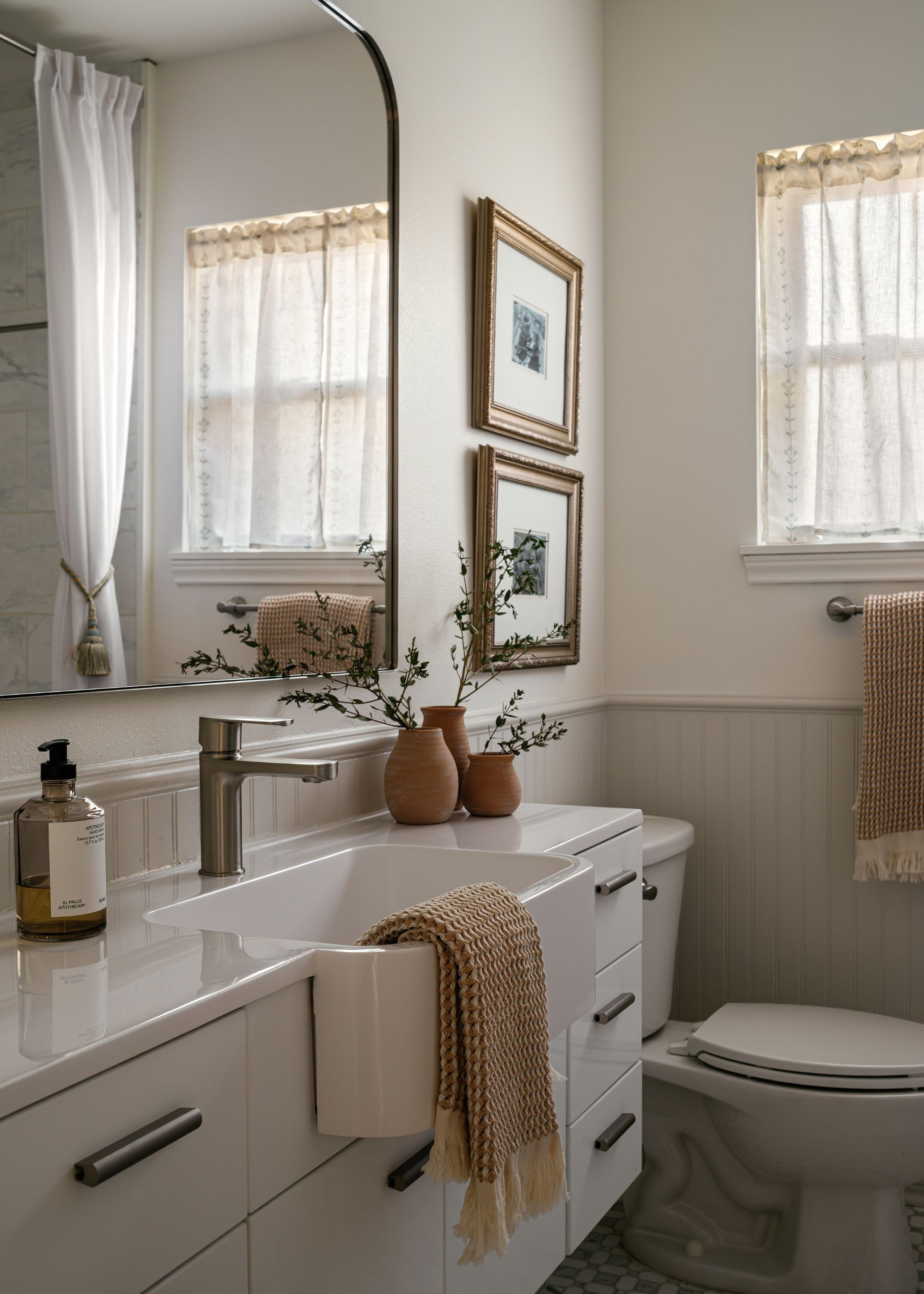
Cleaning laminate countertops is by no means a fun or easy task, and as Lauren emphasizes, "Laminate is one of the worst materials to use for a bathroom countertop. It bubbles and warps in moisture, and edges chip rapidly."
The Livingetc newsletters are your inside source for what’s shaping interiors now - and what’s next. Discover trend forecasts, smart style ideas, and curated shopping inspiration that brings design to life. Subscribe today and stay ahead of the curve.
Instead, she says it's best to opt for quartz. "It has the clean, polished look of stone, but withstands daily moisture and can be kept clean with ease," adds Lauren.
"Laminate can make a good countertop, and it is budget-friendly," explains Paul. "But the problem is usually the substrate... what the laminate is glued to. Most companies are using cheap particle board, and that does not hold up to water well. If you use quality plywood for a substrate, that would be better." But still, the expert notes that if you can, and it fits in your budget, it's best to choose a different material in place of laminate.

Paul McManus leads McManus Kitchen & Bath in Tallahassee, where he and his team help homeowners create “forever homes” with custom kitchens and bathrooms. With a focus on design excellence and a smooth, start-to-finish process, Paul has built a reputation for remodeling without the overwhelm.
3. Tile
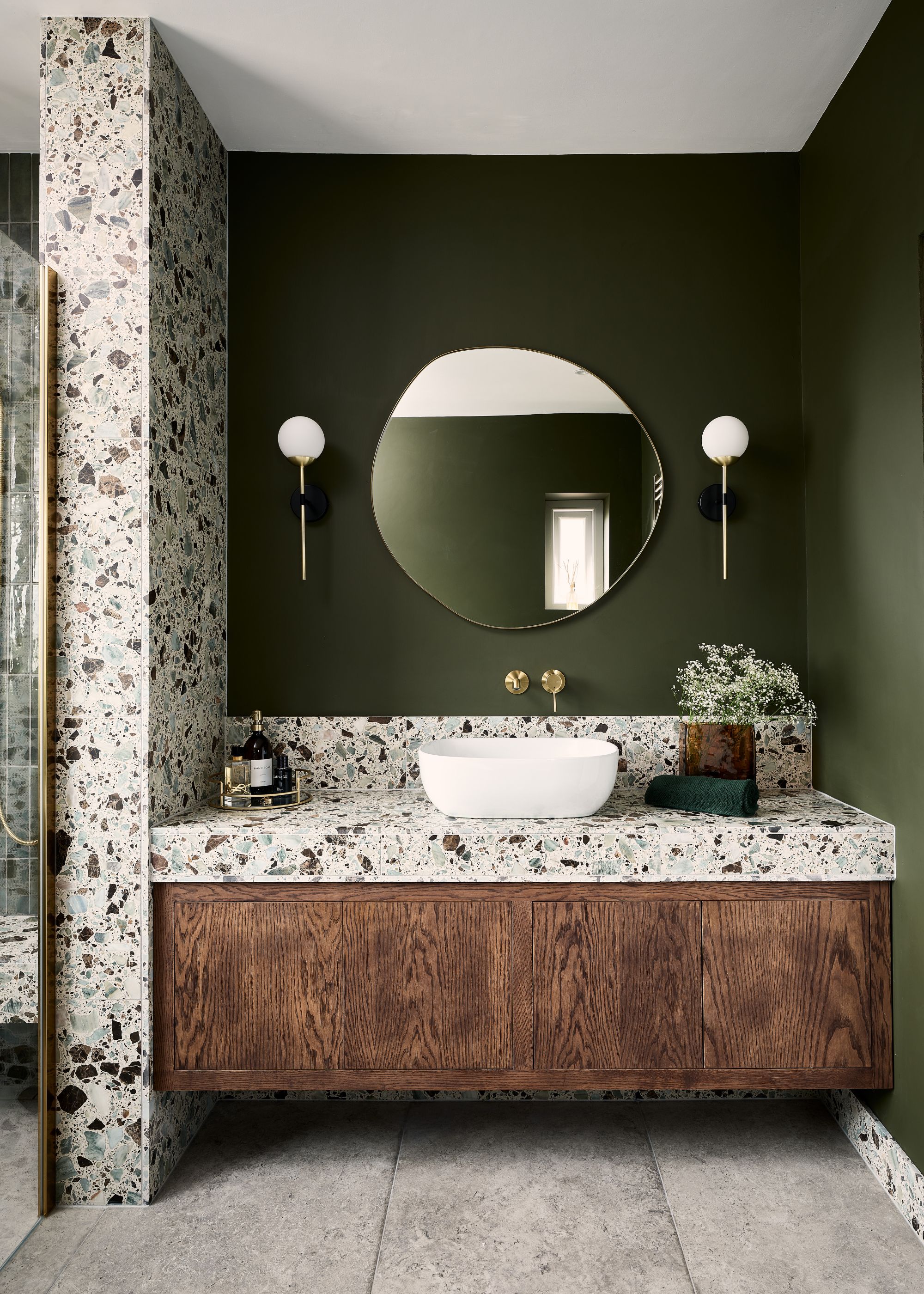
Before you run towards those bathroom tile trends for a vanity surface, it seems this material isn't the most durable in the long run with it comes to your bathroom counters, and here's why. "Tile may look beautiful, but it is seldom a good idea to use it as a bathroom countertop. Grout lines collect buildup and lose their brightness fast," says Lauren. "It is better to have the tile on the walls where it can be used to add texture and pattern. Instead, let a solid surface vanity provide the smooth, continuous finish that actually lasts. The result feels modern, seamless, and easy to maintain, which is exactly what a bathroom should be.
Solid surface worktops include brands like Corian, which have non-porous and durable features that are made from acrylic resins and natural materials.
However, Grazzie Wilson, bathroom expert and head of creative at Ca’ Pietra, says, tiles may still have a place on bathroom countertops if it's approached in a more refined way. She notes, "the old look of small ceramic tiles with heavy grout lines is best left in the past, as it invites water marks and makes cleaning difficult."
Grazzie says if you want to avoid tiles, then opting for terrazzo countertops will instantly add character to a bathroom vanity unit. "Its naturally speckled surface feels timeless yet playful, pairing beautifully with both painted and timber cabinetry," Grazzie explains. "A honed finish softens the look for a more relaxed, tactile feel, while polished terrazzo reflects light for a cleaner, more contemporary aesthetic. Edge detailing and careful color pairing with the basin and hardware will ensure the surface feels seamlessly integrated, turning the vanity into a true focal point."

Grazzie has worked in the interiors industry for more than a decade. At Ca’ Pietra, one of the UK’s leading stone and tile brands, she heads up creative, overseeing product collections as well as the company’s distinctive brand, look and feel. Her stylists’ eye and passion for the technical side of tiling is unparalleled.
4. Wood
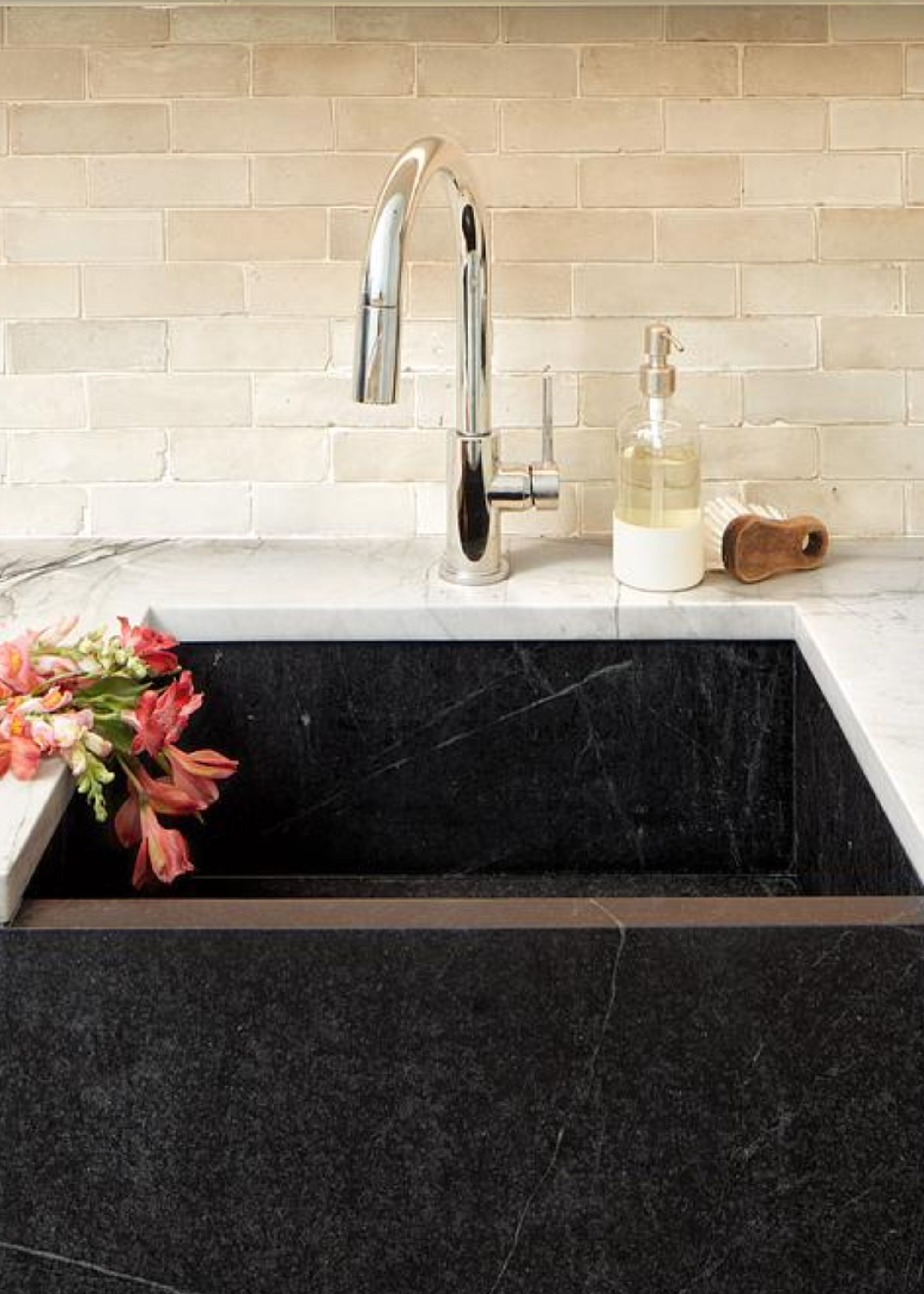
If you're looking into wood bathroom ideas, then you might want to think about how you'd utilize this material in this space. As the experts have pointed out, it's best to avoid wood on bathroom countertops as the material can easily fade away if it's not maintained properly.
"Wood should never be used where moisture is a part of daily living," Lauren tells me. "It may look beautiful, but it swells and discolors with every drop of water."
Ariana Anderson, expert at Tile Club, says: "Those live-edge wood countertops look great on Instagram, but the reality is that wood can swell and warp when exposed to water."
Instead, you could opt for soapstone as it is the perfect bathroom countertop pick. It has the same warmth and organic feel of wood, but it holds up due to its easy maintenance and non-porous properties. And as Lauren says, it also "holds up beautifully in constant use."
So in summary, it's probably best to keep wood out of the bathroom as much as possible and opt for hardy materials that will last a lot longer. In doing so, you'll avoid those bathroom mistakes in no time.
Bathroom Bathroom Accessories
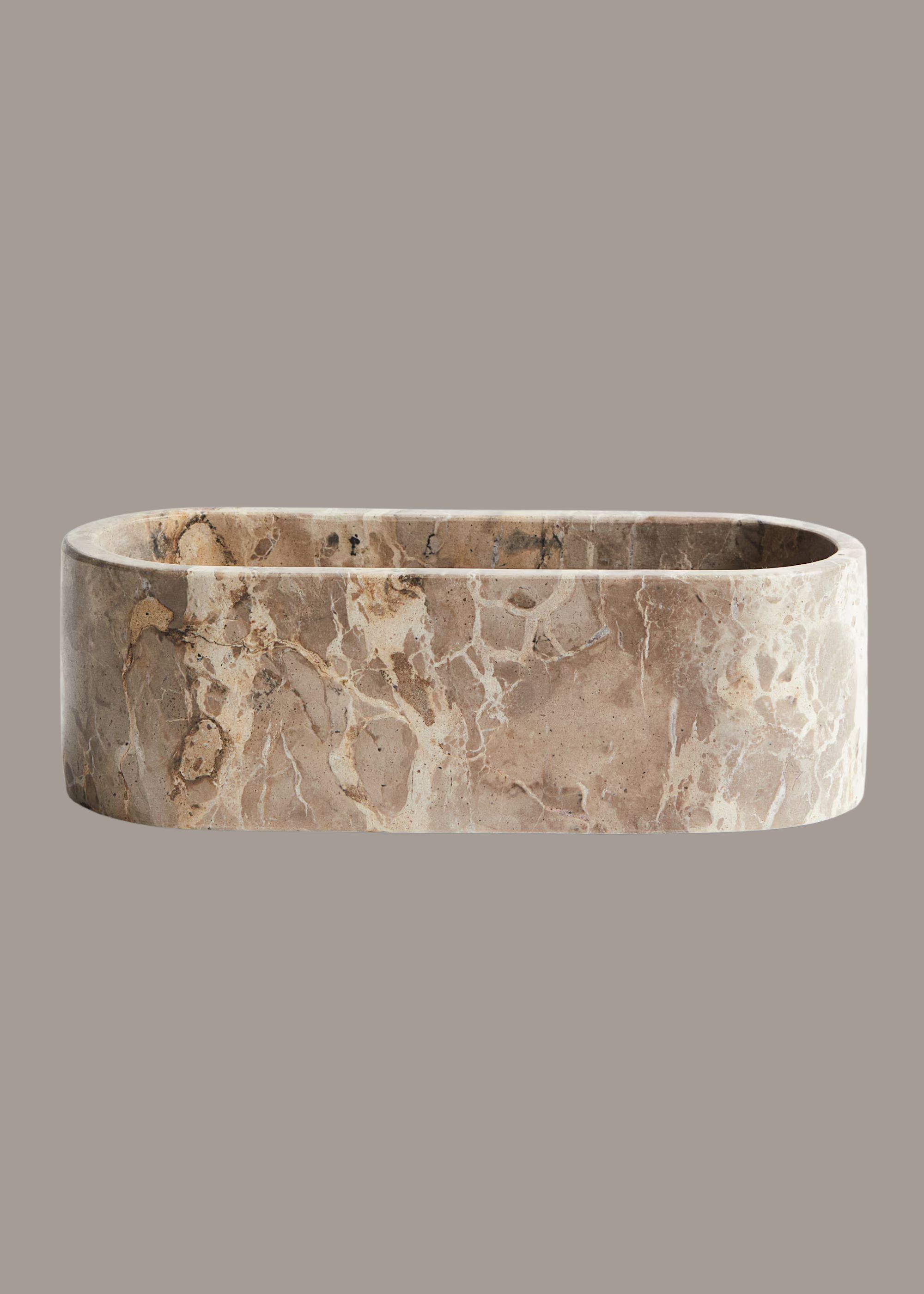
The ideal little bathroom organizer, this marble make-up organizer is the perfect place to keep all your everyday essentials in one place. Lipstick? Check! Blusher? Check!
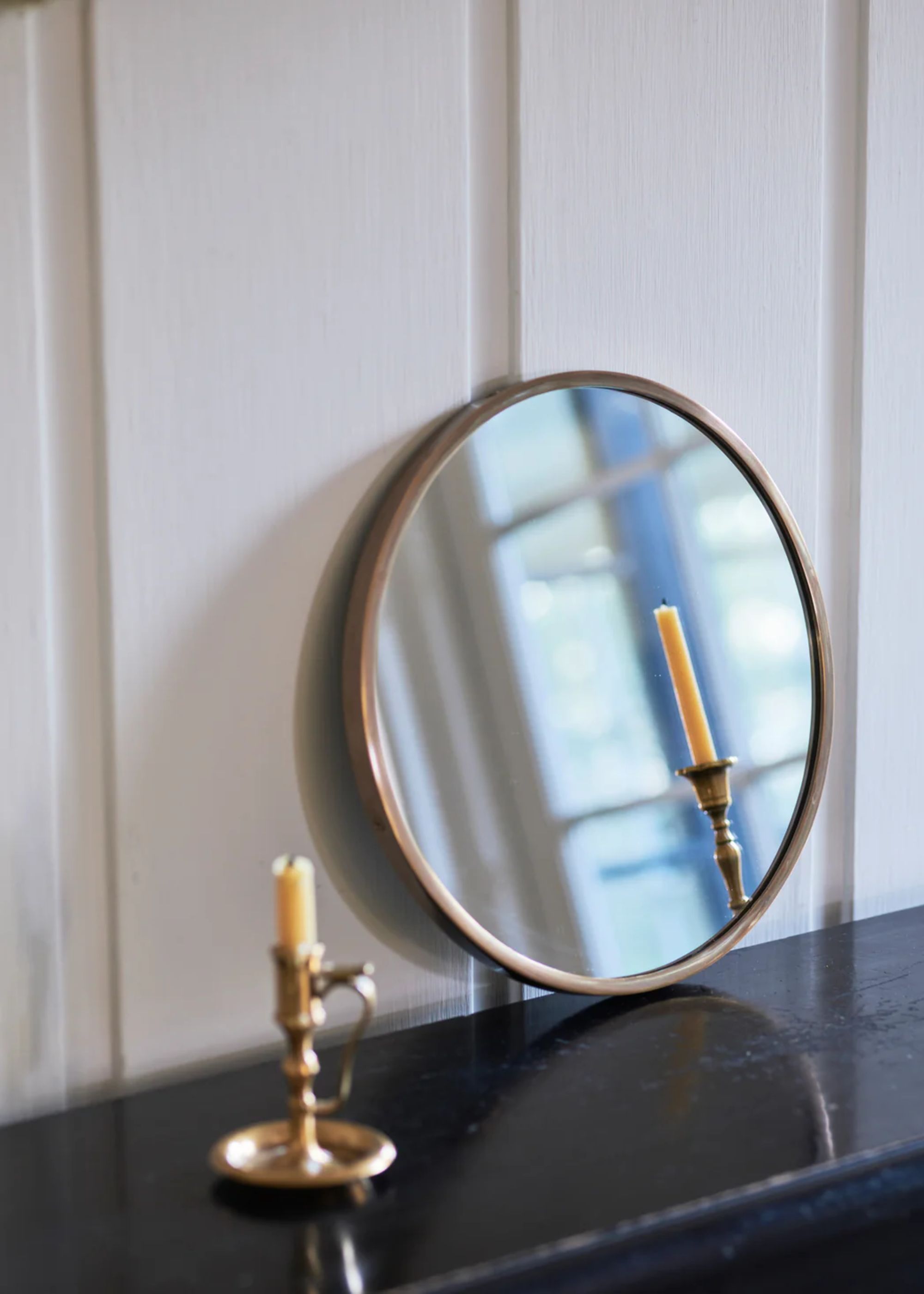
Curves are the bathroom mirror trend we're embracing, and this Pepin Brass Mirror from Rowen & Wren certainly knows how to add class and style to those small bathroom ideas.
FAQs
What Is the Most Sanitary Countertop Material?
"Porcelain stoneware is typically the most sanitary countertop material," explains Ariana. "It's non-porous, so it won't absorb water or stain the way natural stone can. It's easy to wipe up standing water or splashes of toothpaste, makeup, or skincare products without the need for lots of cleaners. They also come in large formats and a gorgeous variety of designs, so you're not sacrificing style for sanitation."
She continues, "Cutting-edge technology allows porcelain tiles to mimic natural materials like semi-precious stones, marble, and wood, creating countless opportunities to design a gorgeous and low-maintenance bathroom."
Now that you've got all your need on materials to need for bathroom countertops, let's dive into all things bathroom flooring trends. From checkerboard flooring to supersized porcelain, there's a lot to choose from, so be sure to read our guide on it to stay on top of the latest and hottest bathroom must-haves.

Faiza is the Renovation Editor at Livingetc. She previously worked for The Independent as a News Feature Writer, where she crafted lifestyle, entertainment, and news stories. She also worked as an Audience Editor for the newspaper for almost two years. Thriving in the busy newsroom, Faiza also spent her time crafting stories for Sky News as an SEO reporter, where she produced stories based on trending topics. Lifestyle and interior design have been areas of interest for her for some time, and as she advances in this field, she will continue to refine her skills in all aspects of design. Faiza has a background in SEO, social media, and reporting. Her passion for writing goes beyond her work as she loves all things poetry and creative writing.
